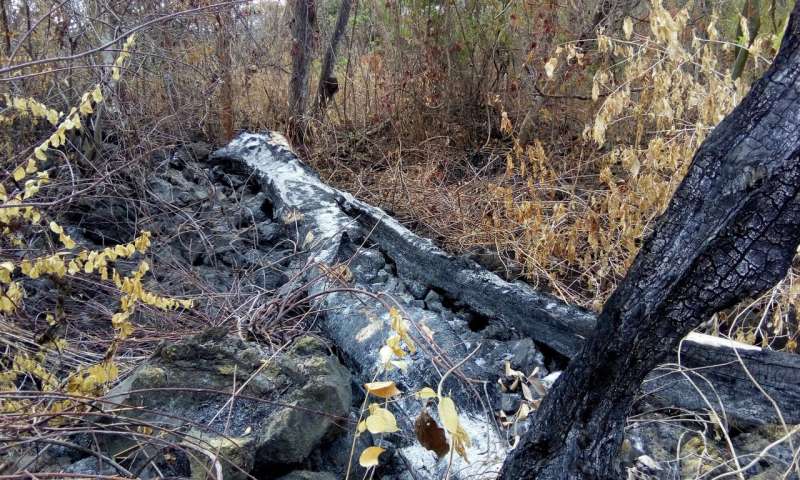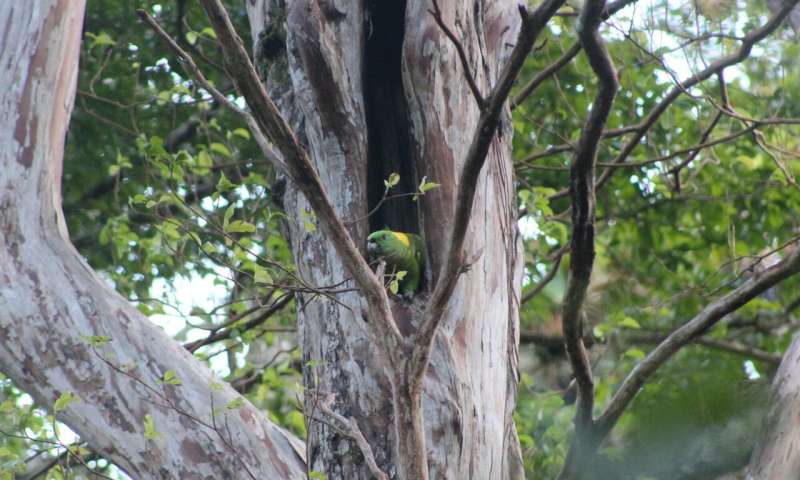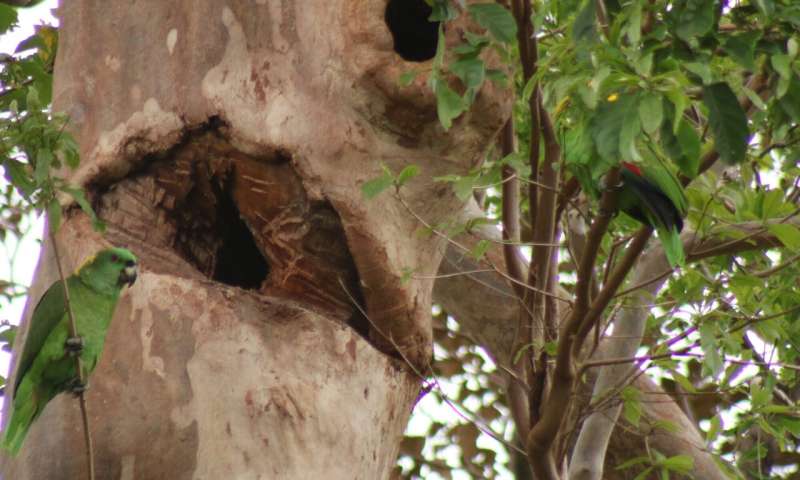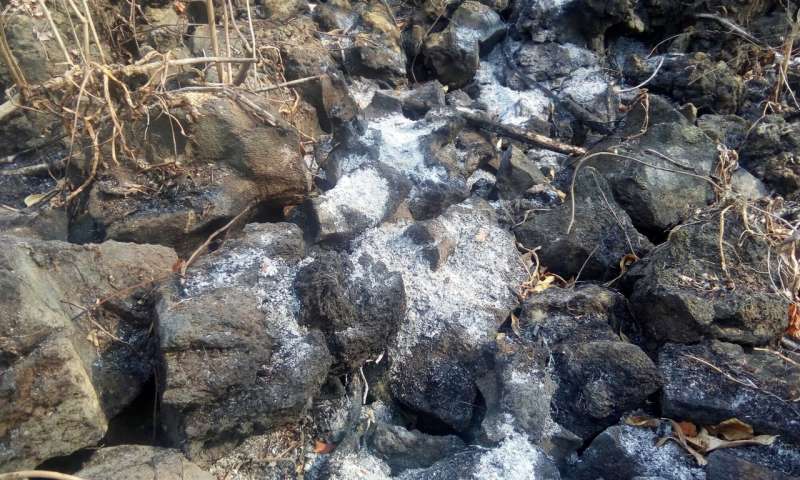Forest fire pushes imperilled parrot closer to the brink

A devastating forest fire in Nicaragua has destroyed a vitally important nesting and roosting site of the yellow-naped amazon, one of the most endangered parrots in Central America.
Peña Inculta, a haven of biodiversity on the twin-peaked volcanic island of Ometepe in the middle of Nicaragua's largest freshwater lake, was officially designated as a wildlife refuge in 2010 in view of its ecological and cultural importance.
It is home to almost 50 species of resident and migratory birds, including the yellow-naped amazon. This charismatic but seriously threatened bird is one of the more conspicuous and exotic inhabitants of Peña Inculta. And this forest is—or was—one of the most important roosting, feeding and nesting sites for Ometepe's iconic parrot, harbouring a population of more than 400 individuals.
The ecological impact of the fire is wide-reaching, and the destruction of parrot habitat will undoubtedly have a detrimental effect on a broad spectrum of other wildlife, including capuchins and howler monkeys, agoutis, sloths, armadillos and bats, as well as a variety of reptiles. But it's the yellow-naped amazon that is likely to be hardest hit in view of the species' rarity and limited range.

As if it wasn't enough to run the gauntlet of nest-robbers who poach their eggs and young to supply the local, regional and international pet trade, these beleaguered parrots have now been deprived of a sizeable chunk of their forest home. Although it doesn't sound massive, the 120 hectares lost to the fire represents 40% of the most densely forested area within the wildlife refuge. The widespread loss of mature trees—on which the parrots depend for nest holes—is a particularly serious blow to their breeding prospects in the coming seasons.
Fires—either started deliberately or the result of human carelessness—are a fact of life on the island of Ometepe, and this particular patch of forest has been affected twice within the past five years. But the latest conflagration is one of the most severe that Peña Inculta has ever suffered. The fire lasted over two weeks, and the fact that it didn't spread even more widely is due largely to the efforts of the local authorities, communities, NGOs and guides to bring it under control.
It would take decades for the burned forest to regenerate naturally. With that in mind, Fauna & Flora International (FFI) and our project partners in Nicaragua are putting together an emergency reforestation plan that includes establishing a tree nursery. This restoration work will not only help to minimise the long-term impact of the fire, but also help to reverse the recent trend that has seen forest cover in the refuge diminish year on year as a result of illegal logging and agricultural encroachment.
-

Typical yellow-naped parrot nest site in the trunk of a mature tree. Credit: Angelica Valdivia/FFI -

The rocky terrain in Peña Inculta means that replanting trees will be difficult and time-consuming. Credit: Angelica Valdivia/FFI
The reforestation process is complicated by the fact that the terrain is extremely rocky making it very difficult to plant trees—Peña Inculta literally means "uncultivated rock." For this reason, restoration of the 120 hectares will need to be undertaken over a five-year period, during which thousands of trees will be planted out in a series of 20-hectare blocks. Particular priority will be given to replacing lost tree species that represented a vital food source for yellow-naped parrots, monkeys and other species that the wildlife refuge harbours.
Ironically, FFI was already poised to launch an appeal on behalf of the yellow-naped amazon, which focused on the need to protect this exquisite but endangered parrot from poachers. In light of the latest disaster, we are now actively soliciting additional support for this vital habitat restoration work, in order to help conserve the remaining population. We are also seeking funding to equip and train local conservation groups and community members in fire management, in an effort to safeguard the whole biosphere reserve of Ometepe against this kind of fire damage in future.
Provided by Fauna & Flora International

















